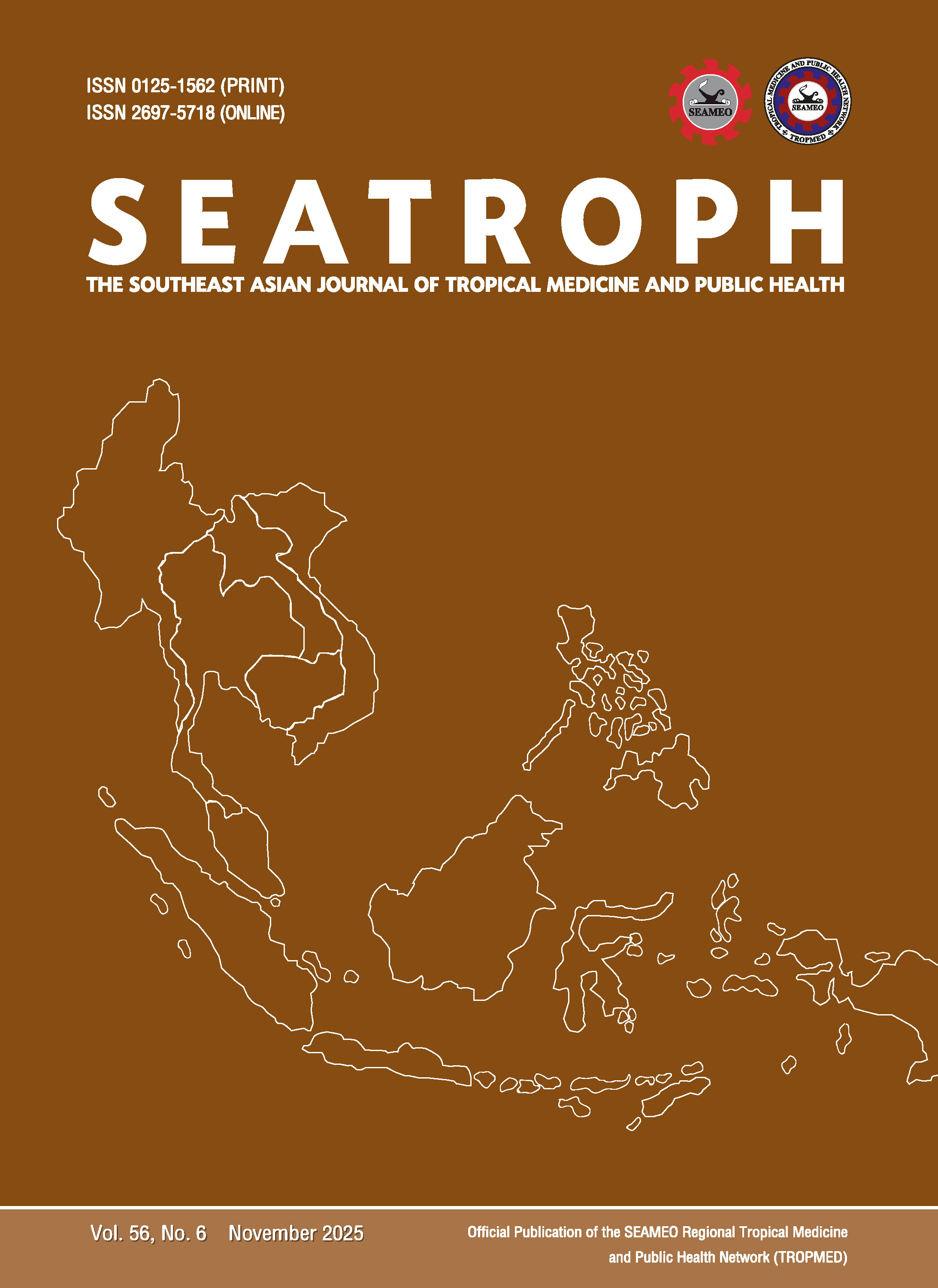ASSESSMENT OF THE PREVALENCE AND MANAGEMENT OF ELDERLY PATIENTS WITH TYPE 2 DIABETES MELLITUS AND MULTIMORBIDITIES AT PRIMARY LEVEL CARE INSTITUTIONS IN THAILAND
Keywords:
multimorbidity, elderly care, type 2 diabetes (T2DM), primary level care (PLC), Thailand, healthcare managementAbstract
It is important to correctly manage elderly patient with type 2 diabetes mellitus (T2DM) with multimorbidity to prevent an increase in morbidity and mortality. This study had two parts. In Part 1 we aimed to determine the prevalence of multimorbidity among elderly T2DM patients in Thailand and in Part 2 we aimed to assess the management of elderly T2DM patients in Thailand at primary level care (PLC) institutions in order to inform strategies to reduce morbidity and mortality in the study population. Inclusion criteria for subjects in both study parts were being aged ≥60 years and having T2DM. Subjects in both study parts having incomplete or inaccurate medical records or having only one visit for T2DM were excluded from the study. The data used for Part 1 of this study were population health data obtained from the Ministry of Public Health, Health Data Center (HDC) for the year 2019. The data used for Part 2 of this study were obtained from the medical records of the study subjects at 4 purposively selected PLC district hospitals. The care given at these 4 hospitals was compared with the Thailand’s 2017 Clinical Practice Guidelines for Diabetes. 529,277 subjects were included in Part 1 of the study, 348,376 (65.82%) females. The mean (±standard deviation (SD)) age of study subjects was 70.0 (±8.8) years. 377,630 subjects (71.35%) had multimorbidity. Of the subjects in Part 1, among patients who received care at all PLC institutions, 157,951 (71.72%) had ≥1 comorbid condition in addition to their T2DM. 6,460 subjects were included in Part 2 of the study, 4,171 (64.57%) females. The mean (±SD) age of subjects was 70.0 (±7.6) years. Of the subjects in Part 2, 6,112 (94.61%) had ≥1 comorbid condition. The most common comorbid conditions were hypertension (n = 5,045, 78.10%), dyslipidemia (n = 3,125, 48.37% and renal insufficiency (n = 2,684, 41.55%). Among subjects with multimorbidity at the 4 study institutions, from 648 of 1,090 (59.45%) to 867 of 1,054 (82.26%) subjects had yearly HbA1c testing following the recommendations in the 2017 Clinical Practice Guidelines for Diabetes and from 97 of 1,090 (14.97%) to 256 of 1,126 (27.71%) subjects achieved the HbA1c target of ≤7.0% following the recommendations in the 2017 Clinical Practice Guidelines for Diabetes. In summary, in our study population, the proportion of subjects with multimorbidity was relatively high and much of the care at the PLC study institutions did not meet recommended guidelines. We conclude there is a need to improve the care of elderly patients with T2DM at the study institutions. Further studies are needed to determine what factors caused the failure to reach care guidelines in the study population at the study PLC institutions and how to improve compliance rates with those guidelines, in order to reduce morbidity and mortality in the study population at the studied PLC institutions.




